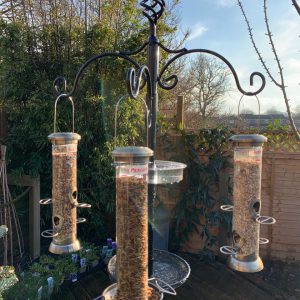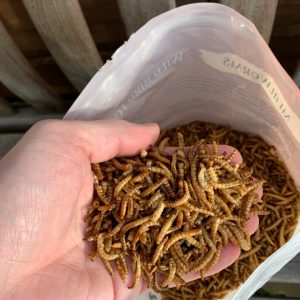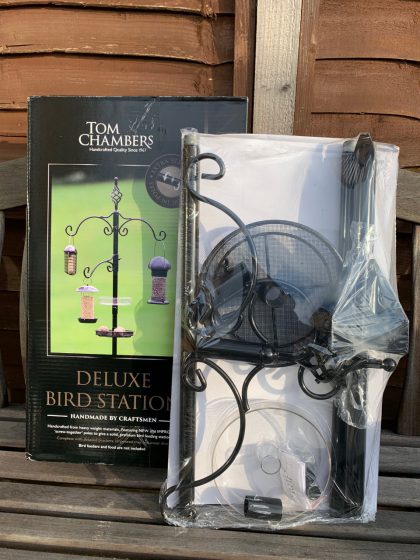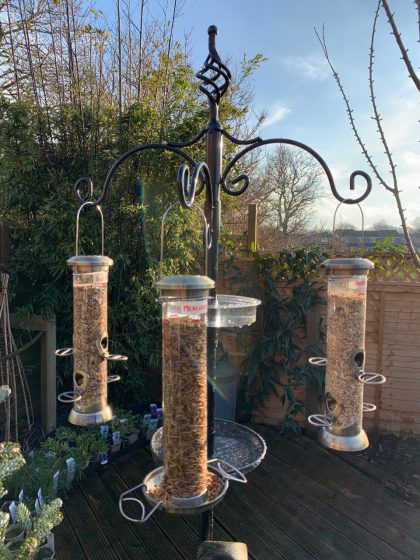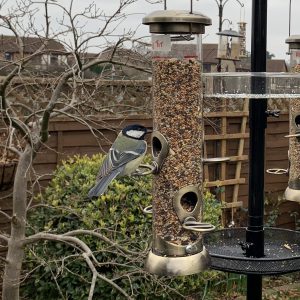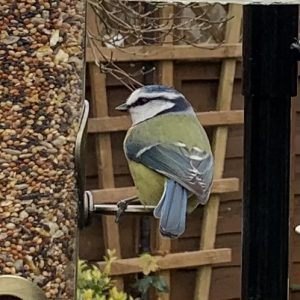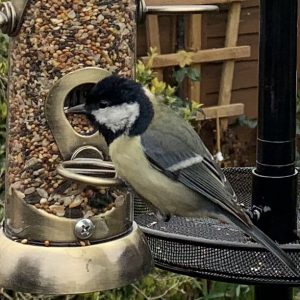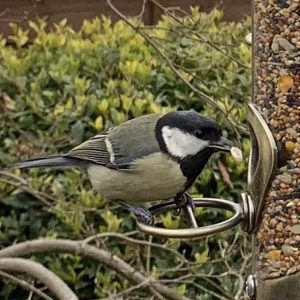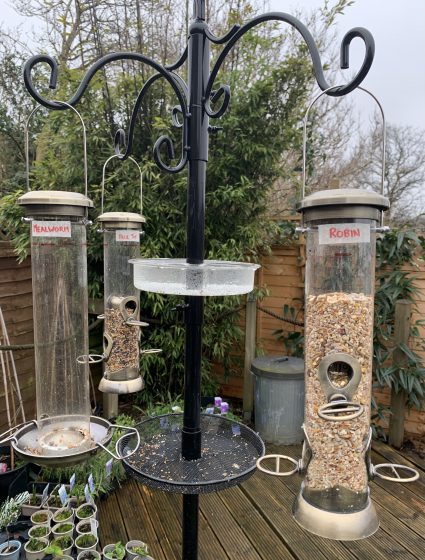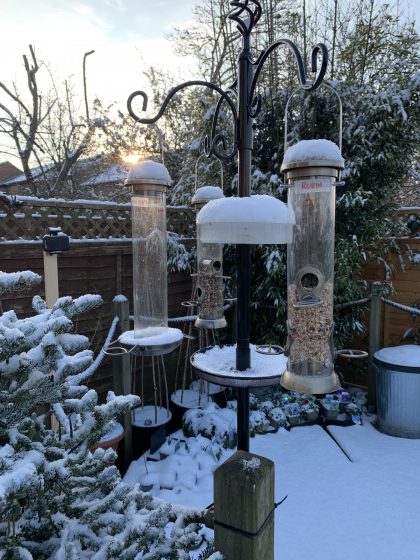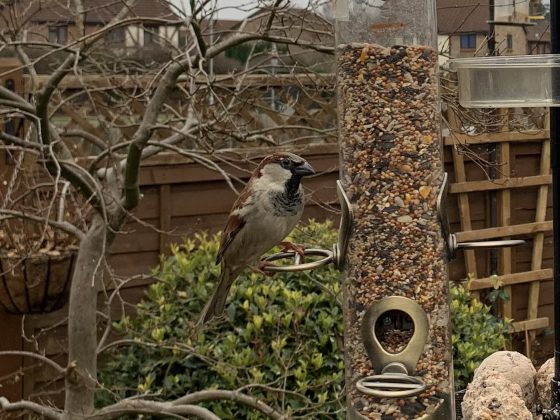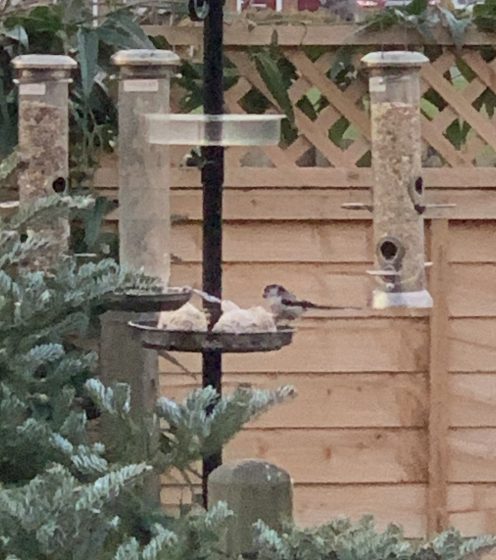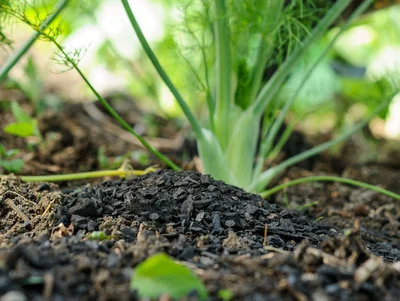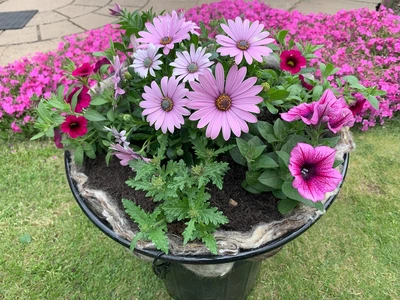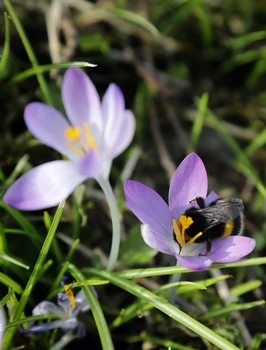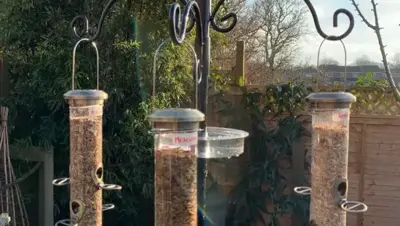
The series has concluded! Did Dan achieve his goal?
Can you attract Blue Tits & Robins into your garden?
By Millbrook Head Buyer, Dan Hume
Background:
Growing up in Essex, despite many beautiful days in the countryside, I rarely saw any Blue Tits. In fact, I can’t remember seeing one until I move to Kent some 20 years ago, so I’m fascinated with them if I’m lucky enough to see one.
I’ve been buying wild bird care products for Millbrook for many years and I’ve always wondered whether what we call the ‘Specialist Feeds’, as in seed for specific bird types, actually work; that is, do they attract that particular bird into your garden over that of a standard seed mix?
This year, as we’ve been spending more time at home and in the garden (especially my wife who is working from home), it’s time to put this to the test by trialling a couple of specialist seeds mixes to see if we can attract Blue Tits & Robins (my wife’s favourite) into the garden so we can take pleasure in their appearance.
Existing Set-up
I am more of an ad-hoc bird feeder, feeding more in Winter, or when spending more time at home. My wife reminds me to feed them if the feeders are empty, laying on the guilt, saying, “Look, the birds are hungry!”
I typically feed using Henry Bell No Grow Seed Mix (2kg, £5.99). The feeders are over a rockery and I prefer not having to weed from the sprouting seeds! In the Winter I also feed with Henry Bell Superior Fat Balls (50, £15.99). I’ll leave my existing set-up and add to it with the experiment outlined below. The main types of bird we normally get in the garden are: Sparrows, Blackbirds, Starlings, the occasional Wood Pigeon, and a pair of Collared Doves. We very rarely get Blue Tits or Robins, so if we do, that would be fantastic.
Aim of the Trial: To try and attract Blue Tits and Robins into the garden using specialist feeds.
Trial Set-up: Beautiful sunny January morning.
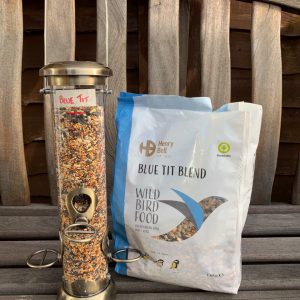
Blue Tits: Henry Bell Blue Tit Blend 1.8kg, £5.99, in a Henry Bell Heritage Seed Feeder, £16.99. This blend promises to attract Blue Tits, Coal Tits, Long-Tailed and Willow Tits. Let’s see!
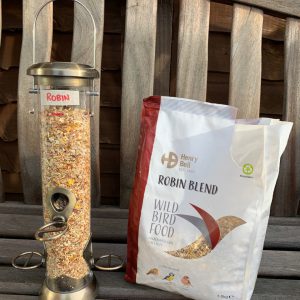
Robins: Henry Bell Robin Blend 1.8kg, £5.99, in a Henry Bell Heritage Seed Feeder, £16.99. This blend features sunflower hearts for energy and mealworm and rowan berries that Robins love for extra nutrition.
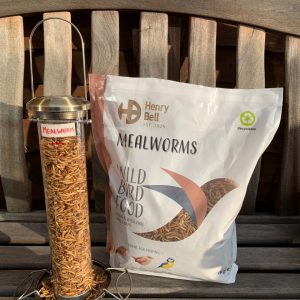
Additions: To give it extra welly – Henry Bell Mealworms (1kg £19.99) in a Henry Bell Heritage Mealworm/Suet Treat Feeder, £16.99.
This is one of our top 10 sellers in wild bird care and has grown massively in popularity recently. They’re great for garden birds because they’re rich in protein and useful in Springtime to help parent birds care for their young.
Feeding station: Tom Chambers Deluxe Bird Feeding Station, £49.99.
I was impressed with the quality of the build – its screw-together poles were easy to put together and it has a substantial ground anchor. It looks great!
Results: Week 1
Saturday (raining):
Robin Blend 1/3 gone
Blue Tit Blend 2/3 gone
Mealworms (all gone!)
Standard Seed Mix 1/2 gone
Fat Balls – Slightly nibbled.
Sunday (beautiful cold, dry day):
Time to monitor progress. So excited to see both Great Tits & Blue Tits feeding predominantly from the Blue Tit Feeder (Greats Tits also fed from the Robin feeder).
I set up my phone to take some photos, put up a stake with camera attachment (old car phone holder) and used my Apple watch as a camera trigger. Took photos from the upstairs study.
Saw one Robin briefly, but he didn’t hang around to be photographed. My aim now is to try and attract the Robin back more and take his photo!
Monday-Friday
It’s fantastic to see the Greats Tits & Blue Tits are now visiting on a daily basis. They are predominantly attracted to the Blue Tit Seed mix, rather than the other feeders (the volume of this seed is going down quick, refilled on Thursday). Hopefully the photos & video clip speak for themselves!
The aloof Robin has only shown himself a couple of times and very rarely goes to the feeders. He prefers ground feeding from the seed and mealworms knocked off from other birds. This is going to be focus for next week, trying to get him to hang around long enough to get his picture! This could be a challenge!!
Results week 2:
The camera-shy Robin continues not to show himself, only darting glimpses. However, I can hear his song so I know he is about! To everyone’s amusement, I have spent too many hours trying obsessively to get a good picture. I have put a secondary saucer (with drainage holes) just under the feeders, filled with the Robin Blend. Hopefully, ground feeding may attract him in some more.
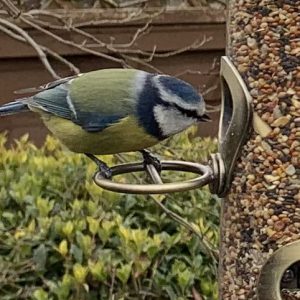
The mealworms are going at a rate of knots and with the cold snap I am refilling the feeder almost every other day. The Wood Pigeons also love these, I am surprised they can take off! The Blue Tit Blend continues to be the most popular by volume, followed by the Robin Blend and then the No-Mess.
With it getting lighter in the morning, I love looking out into the garden to see if there are any birds on the feeders before I go to work. With great excitement (resulting in me waking up the rest of the house!) I notice a bird that I do not recognise and had never seen before in the garden. A petite, elegant greyish bird, with a white patch on its head and a long tail. By looking it up I believe it is a Long-Tailed Tit. I just managed to grab my camera to get a faraway picture!
I really am starting to enjoy attracting the birds into the garden. I am now starting to think of ways to keep them, so as it is National Nest Box Week I’m going to invest in one. I have the perfect location on the end of the shed.
Results Week 3
The birds continue to love the feeders. The Blue Tits & Great Tits feed on a daily basis, especially in the mornings when it is quieter. We’ve also have had starlings collecting in a nearby oak tree then suddenly flock down on mass to the feeders. This drives our cats, safely behind the patio doors, into a frenzy of trying to chatter to them.
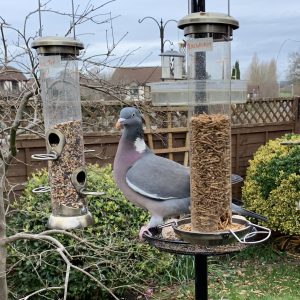
The wood pigeons are also regulars along with sparrows and blackbirds. On a less successful note, the robin has only shown himself a few times. As soon as there is any disturbance (like myself) in the garden, he makes a quick exit. I think it will take more time for it to see the feeders as a regular food source and to gain its trust.
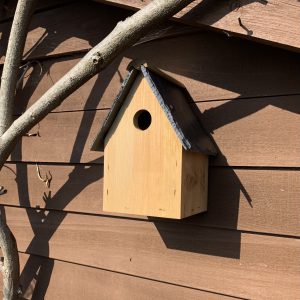
To try and tempt some of the birds to stay, I have installed a Tom Chambers Slate Roof Nest Box (£14.99) on the side of the shed. This is in a great, sheltered, safe position (especially when the wisteria comes into leaf), you can also view it from the house.
Conclusion
The aim of this trial was to try and attract Blue Tits & Robins into the garden using specialist feeds. So did they work?
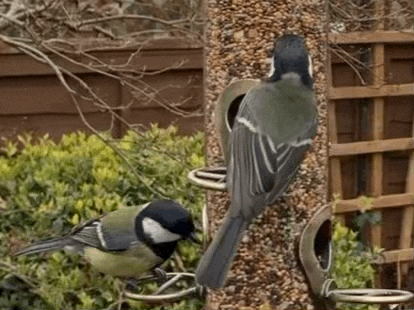
The answer for the Blue Tit feed is an unreserved “Yes”. The numbers and frequency of Blue Tits, Great Tits and Long-Tailed Tits has significantly increased and the birds are feeding predominantly from the Blue Tit feeder. I cannot recommend this feed enough.
The Robin feed has been less successful, but I do not believe this is because of the feed. Robins are ground feeders and this set-up may not attract them so much, they are also very territorial. As I have seen in the Plant Area at Gravesend it takes time for them to establish themselves, then once established they can be as bold as brass. I have not given up. This year I want to review some of the planting in the garden to give the birds a more natural source of food and shelter.
As far as volume of consumption, the mealworms takes the number one spot. As fast as you fill the feeders, they are gone. All the birds love them. In the future I will probably mix these into the seed mixes or some suet treats to make them last longer. Thoroughly recommended.
It has taken me by surprise how rewarding this trial has been for myself and my wife. At a time when our homes and gardens are our sanctuaries, there isn’t a better time to attract wildlife into them and gain the benefits of doing so.
We’d love to see your bird-feeding pics! Post them on our Facebook pages, or email them to millbrookfamily@millbrookgc.co.uk!

